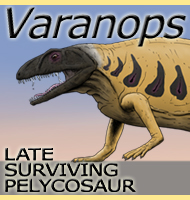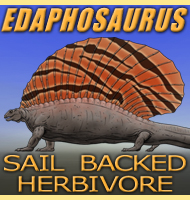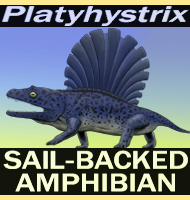


Kenomagnathus
Name:
Kenomagnathus
(gap jaw).
Phonetic: Ken-o-mah-nay-fus.
Named By: F. Spindler - 2020.
Classification: Chordata, Synapsida,
Eupelycosauria, Sphenacodontia.
Species: K. scottae (type).
Diet: Carnivore?
Size: Unavailable due to lack of remains.
Known locations: USA, Kansas - Stanton
Formation.
Time period: Pennsylvanian of the Carboniferous.
Fossil representation: Partial skull bones including
maxilla and lacrimal.
The
holotype fossils of Kenomagnathus were originally
thought to be of the
genus Haptodus
until they were formally described as a distinct
genus in 2020. Although only partially preserved, the size of
the lacrimal bone suggests that Kenomagnathus would
have had large
eyes. As a hunter, these large eyes might have helped Kenomagnathus
to see in low light conditions while hunting for prey.
Further reading
- A faunivorous early sphenacodontian synapsid with a diastema. -
Palaeontologia Electronica. 23 (1). - F. Spindler -
2020.
----------------------------------------------------------------------------
Random favourites
 |
 |
 |




